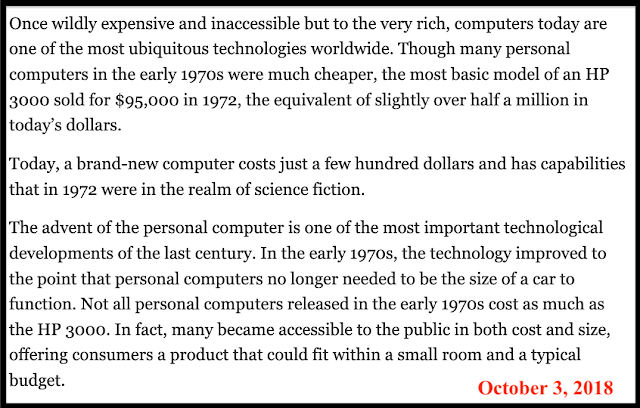Locator: 45781ECON.
The Fed: to move from 3% to 2% inflation, the Fed will kill the housing sector, the auto industry and renewable energy.
JPow's memoirs title: Doing It My Way: The Operation Was A Success But The Patient Died.
Mester's memoirs title: No Regrets: How We Stopped Renewable Energy.
***********************
The Economy
One year ago, Bloomberg Economics predicted with a 100% probability a recession within 12 months.
100% probability.
100% probability.
So, what happened?
***********************
The Blog
The area under the curve:
This, the area under the chart, without a doubt, the largest ever in the history of mankind.
My favorite chart.
Link here.
******************************
Transfer of Wealth -- Already in Play
Now, let's add another data point: the greatest wealth transfer in the history of mankind. Link here.
My parents' generation transferred to me and my generation: $16 trillion.
My generation will transfer to the next two generations, our children, Gen X and Gen Y: $53 trillion.
First off all, I can't get my mind around one trillion dollars, much less $15 trillion, much less $60 trillion.
This transfer has only just begun.
My generation, the baby boomers: 1946 - 1964.
Today: ages 77 years of age - 59 years of age.
***************************
RMDs
Baby boomers: first generation with tax-deferred (and tax-exempt) IRAs.
IRS changed the rules and now inherited tax-deferred IRAs must be exhausted in ten years.
The phenomenon of RMDs from the baby boomers has also just begun.
Age 73: must begin to take RMDs from IRAs.
Human
nature: most folks who have sizeable IRAs and understand investing will
try to wait as long as they can to start taking their RMDs each year.
So, now, we're coming to the end of the year, and the holidays are
coming. RMDs for 2023 start to hit their stride now.
***************************
Housing
Baby
boomers: big families. Common for folks like me to have four, five, or
six siblings. But, Gens X, Y, and Z will have youngsters with zero or
one sibling and that's it.
Much
less money being spent on housing (high interest rates, also, of
course, but less money on housing translates into more money in
non-housing retail sector.
Link here.
***********************
Transportation
Due
to high cost of automobiles, shortage of vehicles, etc., folks spending
a lot less on autos. That leaves a lot more money for non-auto retail
sales.
Excluding autos, sales were up 0.6%, also well ahead of the forecast for
just 0.2%. The so-called control group, which strips out items such as
auto dealers, gas stations, office supply stores, mobile homes and
tobacco stores and is used for the department’s GDP calculation, rose
0.6% as well.
***********************
Disposable Income
In the US, averages $50,000 per capita. Previously reported. Link provided by a reader, thank you.
**********************
Bottom Line
From the linked CNBC article:
“The U.S. consumer cannot stop spending,” said David Russell, global head of market strategy at TradeStation.
“All
three retail sales reports for Q3 were above estimates, which puts us
on track for a strong GDP number later this month. It also gives the Fed
zero reason to loosen policy, which keeps the 10-year Treasury yield
pushing toward 5%.”
Sales gains were
broad-based on the month, with the biggest increase coming at
miscellaneous store retailers, which saw an increase of 3%.
Online sales
rose 1.1% while motor vehicle parts and dealers saw a 1% increase and
food services and drinking places grew by 0.9%, good for a yearly
increase of 9.2%, which led all categories.
There were only a few categories that showed a decline; electronics and
appliances stores as well as clothing retailers both saw decreases of
0.8% on the month.
*************************
GDPNow
Link here.
Estimates for 3Q23 coming in at 5.4%.






































